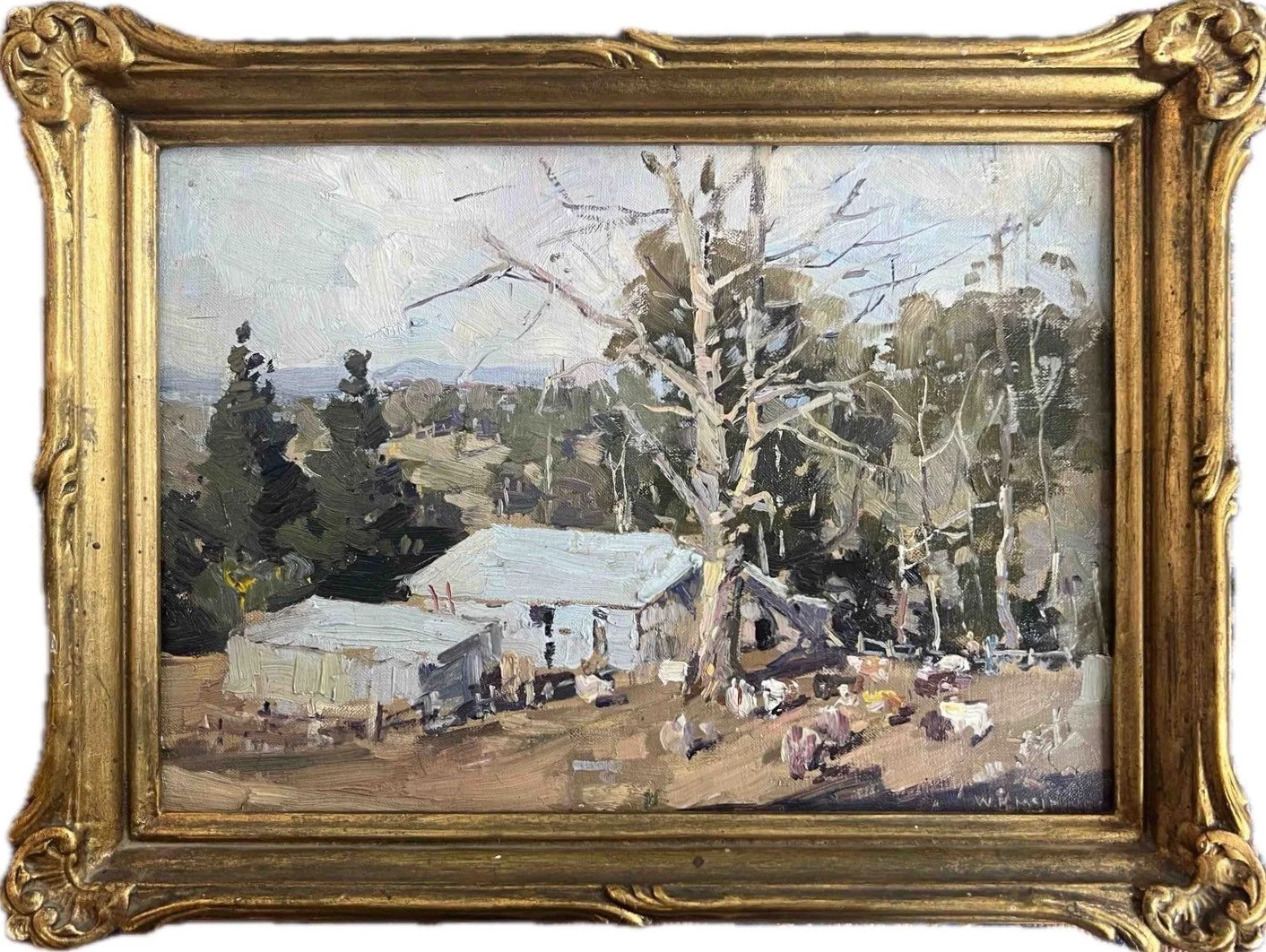William Beckwith McInnes | Farm Near Alphington | SOLD
Farm Near Alphington
25 cm x 35 cm
Oil on canvas on composite board
Signed lower right
The painting is housed in the original John Thallon frame.
An absolute Australian gem. Painted ‘En Plein Air’ on a small canvas board, this work has some of the most exciting brushwork produced by any artist from the early 20th century.
SOLD
BIO
William Beckwith McInnes
(b. 1889- d.1939)
McInnes was a delicate child and, although not from an artistic family, was encouraged to draw by his mother; he painted his first still life at 8. When 14 he entered the Melbourne National Gallery School to study drawing under Frederick McCubbin, later graduating to painting under Bernard Hall.
Hard-working and probably the ablest student of his time, he none the less failed twice to win the travelling scholarship, in 1909 and 1911. Soon afterwards, however, he held a successful show at the Athenaeum Gallery with F. R. Crozier and left for Europe in 1912.
Billy McInnes travelled and painted in France, Spain, Morocco and Britain, spending time in his ancestral Scotland (including a bitterly cold winter in the Hebrides when he lived on boiled potatoes). He discovered the work of Rembrandt, Velasquez, Hals and Raeburn, who were to be his lifelong masters. He exhibited his landscapes in London at the Royal Institute of Oil Painters in 1913 and after his return to Melbourne that year held a sell-out exhibition at the Athenaeum. On 24 February 1915 at the Presbyterian Manse, Armadale, he married the still-life painter Violet Muriel Musgrave. They settled at Alphington; still largely farmland, the locality and nearby Yarra valley provided many of McInnes’s subjects.
In 1916 he stood in at the National Gallery School while McCubbin was on leave and after McCubbin’s death in 1918 was appointed drawing master. He revisited Europe in 1925, returning to great demand as a portrait painter. He won the Wynne prize in 1918, the Archibald seven times (in succession 1921-24) and exhibited at the Royal Academy of Arts, London, in 1928. In 1927 he was commissioned by the Federal government to depict the opening of the first parliament in Canberra by the Duke of York; in 1933 he went overseas again to paint the Duke’s portrait. In 1934 McInnes was acting director of the National Gallery of Victoria and on Bernard Hall’s death that year became head of the gallery school. Although president of the Australian Art Association in 1923-24 and a member of the other leading art societies (including the Australian Academy of Art), he was not active in art politics.
In a spectacularly successful career McInnes was lauded as the heir to Streeton. Stockily built and described as affable but having little conversation and no hobby outside his work, he had no intellectual interest in art. To him art was craft and his love was for the qualities of naturalistic vision, to which he brought a virtuoso technique in oil—a crisp, vigorous and unerring use of the square brush in depicting air and sunlight. His nearest contemporaries were Penleigh Boyd and Elioth Gruner; although more conservative than either, he was not dogmatic or reactionary and was regarded with some affection even by the most radical of his students.
‘A nice modest fellow’, a worrier, McInnes suffered from poor health all his life. His troubles were added to when in a motoring accident in November 1937 he fatally injured a pedestrian; he settled the ensuing civil action out of court. He resigned his position in July 1939. Suffering from a congenital cardiac disorder, he died at East Melbourne on 9 November; he was cremated. His wife, four sons and two daughters survived him. A memorial exhibition of his work was held in Melbourne and Sydney in 1940. A self-portrait is held by the Art Gallery of New South Wales.
Taken from The Australian Dictionary of Biography, written by Richard Haese.





